A Legacy of Violence: Impact Magazine 2018-19

In American politics, issues like immigration and the refugee crisis generate national headlines daily. But the complex dynamics of immigration are inextricably tied to U.S. history in the Americas, where a legacy of colonialism continues to define the relationship between the United States and the nations of Central and South America.
More than 50 years of interventions in Guatemala, Honduras, El Salvador, Panama, Chile, Brazil and other countries in the southern hemisphere have affected the lives of these countries’ residents in various ways. Many have resulted over the long term in the systematic destabilization of government coupled with a legacy of violence and military dictatorship, contributing to the reasons that immigrants may cite for wanting or needing to leave their homelands: gang violence, repression, dictatorship and more.
Several professors and students at John Jay have made it their life’s work to investigate the causes and ramifications of this instability, among them José Luis Morín, Claudia Calirman, Pamela Ruiz, and Marcia Esparza. We profiled these scholars in our latest issue of Impact magazine. Read on for a summary of our Impact feature story.
Suing for Justice
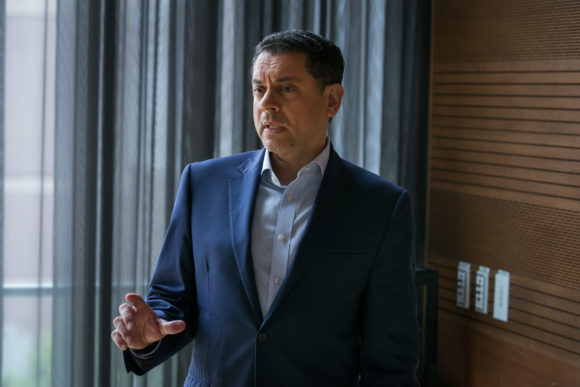 José Luis Morín, Chair of John Jay’s Latin American and Latinx Studies Department, is deeply involved with the process of finding justice for the victims of the American 1989 invasion of Panama. Morín had been in the thick of the invasion, which he recalls as “literally a war zone,” and subsequently filed a lawsuit on behalf of individuals who had been directly harmed, seeking reparations from the United States.
José Luis Morín, Chair of John Jay’s Latin American and Latinx Studies Department, is deeply involved with the process of finding justice for the victims of the American 1989 invasion of Panama. Morín had been in the thick of the invasion, which he recalls as “literally a war zone,” and subsequently filed a lawsuit on behalf of individuals who had been directly harmed, seeking reparations from the United States.
Nearly 30 years later, in December 2018, the Inter-American Commission on Human Rights finally issued a decision in the case, holding the U.S. government solely responsible for the deaths of Panamanian citizens during the invasion; it is responsible for compensating the victims for damages.
Finally having a decision saying that the U.S. had violated human rights through its actions was a key step toward justice. Morín returned to Panama following the decision, going to communities to explain what this meant and speak to the individuals and families who were part of the case.
“What makes this particularly relevant, and so critical to the work we do in this department, is having our students learn about the history of Latin America and how the U.S. played such an integral role in how these countries developed,” said Morín.
Art Under Fire
The U.S. justified its intervention in Panama as a defense of democracy, but some U.S.-backed “democratic” leaders have turned out to be authoritarian dictators. This was the case in Brazil, where a right-wing authoritarian government ruled from 1964 to 1985.
 Claudia Calirman, Associate Professor of Art & Music, is an expert on artistic resistance to government repression in Brazil, and her research — including her first book, Brazilian Art Under Dictatorship — explores how art was expressed in mediums designed to thwart detection. These mediums include body art and what was called “ready mades,” which are every day objects modified to carry subversive or critical messages that could be circulated publicly without implicating the artist.
Claudia Calirman, Associate Professor of Art & Music, is an expert on artistic resistance to government repression in Brazil, and her research — including her first book, Brazilian Art Under Dictatorship — explores how art was expressed in mediums designed to thwart detection. These mediums include body art and what was called “ready mades,” which are every day objects modified to carry subversive or critical messages that could be circulated publicly without implicating the artist.
Calirman’s ongoing work explores different facets of Brazilian art over a variety of time periods, showcasing the ways Brazilian artists approach tough issues and combat repression. Her forthcoming book deals with Brazilian women’s struggles with the term “feminism” as it has applied to their work since the 1960s and ’70s. And Calirman is working on curating a Spring 2020 exhibit at John Jay’s Shiva Gallery about ongoing censorship of art in Brazil.
periods, showcasing the ways Brazilian artists approach tough issues and combat repression. Her forthcoming book deals with Brazilian women’s struggles with the term “feminism” as it has applied to their work since the 1960s and ’70s. And Calirman is working on curating a Spring 2020 exhibit at John Jay’s Shiva Gallery about ongoing censorship of art in Brazil.
Uncovering Violence
Pamela Ruiz is a recent graduate of the CUNY Criminal  Justice doctoral program whose dissertation analyzed the evolution of gang violence in the Northern Triangle of Guatemala, Honduras and El Salvador. An explosion of gang violence in these Central American countries is connected to instability and the destabilization of democratic governments.
Justice doctoral program whose dissertation analyzed the evolution of gang violence in the Northern Triangle of Guatemala, Honduras and El Salvador. An explosion of gang violence in these Central American countries is connected to instability and the destabilization of democratic governments.
Ruiz aimed to classify violence that is truly gang-associated, to dispel myths around violence and better target enforcement. “The perception is that all this violence is attributed to gangs,” she explained, ‘but when you go into a country and interview people, you discover that it’s different groups contributing to violence in different areas.”
Her quantitative methods are filling a key gap in research in the region, providing reliable data that policymakers can use to reduce violence, target corruption, and more.
Documenting Dictatorship
Marcia Esparza, Associate Professor of Sociology and an expert on genocide, state crimes, and human rights violations, would argue that, wherever violence and repression are to be found, remembering victims and commemorating resistance is vital in learning from the past and addressing present violence and corruption.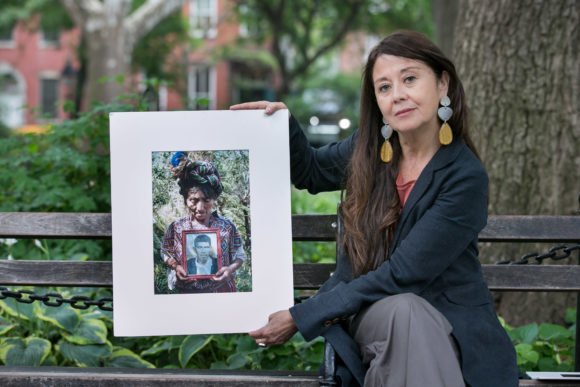
“If we don’t look at the long-term footprints of militarization on the local level, we cannot talk about democracy or democratic institutions,” she says. Esparza was inspired by her work interviewing genocide survivors in Guatemala to found the Historical Memory Project, which archives and draws on primary sources to memorialize the victims of genocide and state violence, and those who resisted it.
She also emphasizes the importance of helping John Jay students connect with their histories as part of a diaspora. Esparza’s students play a key role in the project’s efforts, as they organize and sort through the large archive to pull together educational exhibitions.
Shared History
The shared history of interventionist foreign policy and authoritarian rule has created a spider’s web of mutual entanglements that continue to tie the United States to its southern neighbors to this day. This long-term history of invasion and intervention by the United States has created patterns and threads that John Jay scholars trace in their efforts to understand, alleviate, and memorialize violence and instability in these countries, in order to achieve justice, create a lasting peace and, in the process, help some Latinx John Jay students better understand their own histories.
For the full feature, please visit the John Jay Faculty and Staff Research page to read the whole magazine in PDF form!
Denise Thompson is Trying to Make Post-Disaster Rebuilding Better
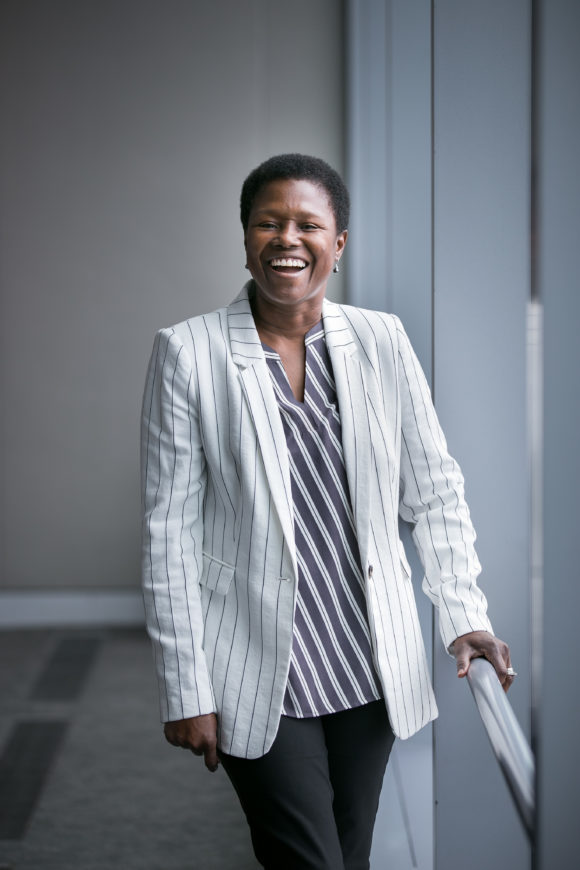 Denise Thompson is an Associate Professor in John Jay College’s Department of Public Management, and an expert on disaster management and risk reduction. Her new book, Disaster Risk Governance: Four Cases from Developing Countries, was published in July 2019 by Routledge. To learn more about where and how she does this work, you can read a profile of Dr. Thompson in this year’s Impact magazine.
Denise Thompson is an Associate Professor in John Jay College’s Department of Public Management, and an expert on disaster management and risk reduction. Her new book, Disaster Risk Governance: Four Cases from Developing Countries, was published in July 2019 by Routledge. To learn more about where and how she does this work, you can read a profile of Dr. Thompson in this year’s Impact magazine.
Read on for an edited interview with Dr. Thompson about her work related to disaster planning and recovery, and how she approached writing a book on such a complex topic:
What factors are most important to consider when planning for storms or natural disasters, whether far in the future or imminent?
Maybe the best way to answer that is to look at the disaster cycle. Mitigation, planning preparedness, response, recovery, reconstruction, and then back to mitigation. Even though I put the phases into discrete components, the cycle is integrated, not discrete. And the steps must always be revised.
Mitigation is essentially putting structural and non-structural elements in place well ahead of a storm. That includes hardening infrastructure as well as putting systems in place to make sure we can respond.
The preparedness phase gets ready for imminent disaster, including by bringing together supplies, people and other resources to respond, and making sure supplies are prepositioned where they’re expected to be needed; organizing transportation and marking routes for evacuation; and more.
Recovery includes the immediate response post-disaster, where communities plan for building or rebuilding; get schools, offices, child care and other systems back up that are required for day-to-day functioning; and bring critical services back on line, like roads, food supplies, water, and the government.
Finally, reconstruction is a process of longer-term rebuilding. Ideally, this includes innovation to ensure communities are “building back better,” and is an extremely integrated, wide-spectrum process that moves toward hardened infrastructure and sustainable processes. This happens after an assessment is done of the damage, and must be integrated into planning.
One example is in the Bahamas. Because they are unable to rebuild exactly the same as before the storm hit, the government is thinking about putting some infrastructure underground, like communication towers, to create some protection from the next storm.
How do you factor in climate change when considering ongoing efforts to prepare for and recover from natural disasters?
Well, what is a disaster? We have to think about that. I was listening to a story on NPR, the bird population of the U.S. shrank by one billion birds – that’s climate change. And even epidemics. Certain bacteria and invasive species thrive in certain temperatures. So it’s a disruption, not only of the human ecosystem, but also of the animal ecosystem.
When we talk about disasters, we tend to talk about natural disasters, but it’s so much bigger. We’re not even talking about man-made disasters, like terrorism or cyberattacks, which could be catastrophic. Those are disasters, too, but man-made.
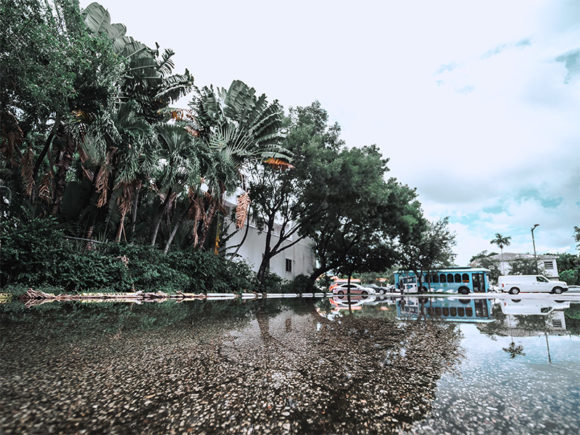
Given the trends in natural disasters associated with climate change (e.g., hurricanes and tropical storms are more frequent, and more frequently of record intensity levels), are there places that are becoming unlivable, or that should be abandoned?
Yes, there are places that should be abandoned. A lot of these countries, their populations are concentrated along the coast, and there are vulnerabilities. Like schools that are flooded in every single storm of course should not have been built where they are.
Are issues of rebuilding and relocation tied in with race and class?
These issues are very tied to rebuilding in many places. You can also look at a place like Flint – race, class and vulnerability are interlinked. Or Newark. Usually, African Americans, Latinos and other minorities are more vulnerable to these disasters. And it’s harder for the poorest communities to recover – the same event has a more drastic impact. The rich have more resources.
In island states, the line is more blurred. The interiors are more rugged, which means most people tend to locate along the coastline, so it’s not as clear-cut an issue as in, say, Hurricane Katrina. But there’s an issue of moral hazard; even knowing that it’s dangerous, people build anyway, knowing that somebody will help them to rebuild. Like the government, or insurance money. So people tend not to bother to plan for disasters.
However, organizations have been exploring insurance, like livelihood protection, for poorer people. For example, the Caribbean Catastrophic Risk Insurance Facility (CCRIF) pools resources from many countries in the region, who pay into this fund. They are disbursed to governments directly, to help pay for rebuilding. Commercial facilities might be getting out of disaster insurance, but others are stepping into that void.
Is there an ideal balance between recovery efforts provided by home governments versus outside aid?
I don’t know if there’s an ideal balance. Governments operate at different levels – national, regional, local, community, household – so we usually say that the government closest to the people should be equipped to help them. But what we find is that often the governments closest to the people are themselves incapacitated by whatever event took place, and they’re not able to help. And if you go one level higher, they may be able to help in some ways but not others, and so on. In cases like those, outside help is needed; the quantity depends on the issue.
Is there a useful role for individual aid?
There’s a useful role, but it’s hard to manage spontaneous volunteers. They may put themselves in harm’s way. Typically we say, go through an entity to help. Most agencies right now want money, because they can best divert it to where it’s needed. That may be potable water, or a sanitary facility, or helping women or children get out of situations where they’re more vulnerable thanks to the disaster. It may be a number of things.
When you talk about disaster planning, mitigation, risk reduction, it’s a big, involved process, and very complex. It’s hard to get a handle on it, but agencies do it. Their effectiveness depends on resources. And no one place has the level of resources needed. That’s why governance systems are important, to bring all these things together – the resources, money, people, institutions, laws, and the formal and informal arrangements that must be made to keep people safe.
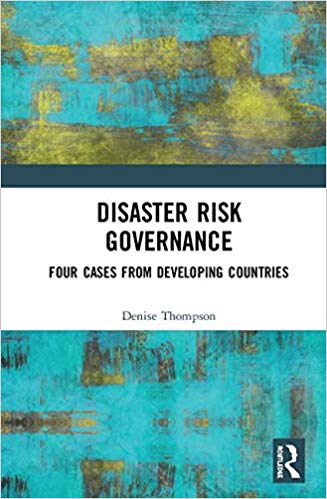 This is obviously a vastly complex topic that touches on every area you can imagine. How do you write a book about that? Is your book more broad, or is it more of a tool?
This is obviously a vastly complex topic that touches on every area you can imagine. How do you write a book about that? Is your book more broad, or is it more of a tool?
The idea for the book came when I was doing a lot of work in the Caribbean and seeing a lot of money being spent, with a minimal return on investment. When the next event came, we were still dealing with the same issues. Activities were happening piecemeal, done by aid agencies, governments, the UN. And preexisting factors, like colonialism, undermined institutions. These were antecedents to what we’re seeing now, but we never could put them together, because we’re always trying to put out fires.
Disaster management systems happen in context of the country, and I realized that countries with weaker governance systems also have weaker disaster management systems. Governance is an umbrella term, comprising all the institutions, systems, actors and processes that come together around disasters.
So what I wanted to do was come up with a number of variables we could use to pinpoint areas we could shore up to improve disaster risk reduction and outcomes. I looked at institutions as a key component in that, like legislation, insurance, security. I also talked about labor policy, networks, economic investment – all these things may not be part of disaster policy, but they support it.
Why did you pick those four specific countries – two in the Caribbean, two in Sub-Saharan Africa – to feature in your book? Did you find some similarities there?
When I came into academia in 2008, there wasn’t much literature on poor countries. And that is not specific to disaster management. The voice was missing. I thought, if I looked at the sub-Sahara and the Caribbean, I would be better able to come up with a governance framework that actually works for developing or poorer countries.
The similarities I picked up are mostly in the institutional and informal aspects. For instance, indigenous peoples from the Caribbean and from Africa were similar in that they had communities with their own laws and customs that may be opposed to planning around disasters. Also, these countries have a legacy of corruption – not all poor countries, some rich countries have higher rates of corruption – but still, government ineffectiveness, government inaccessibility to their populations, these things were comparable. Those cause inefficiencies and waste in the system, they cause people to take longer to recover from disasters. It’s complex and messy.
In the book you have to try to manage the multiple components; you can’t write on everything but you can pick out the salient things. I hope that’s what I was able to do.
Is it disheartening, to see inefficiencies and to see problems getting larger every year, problems that we’ve caused ourselves and failed to find effective solutions to thus far?
Yes, but at the same time, we’re working more closely with communities, and households and individuals, and I think that’s where it has to happen. So while governments create the policies, the infrastructure and the systems, the ecosystem is bigger, with subsystems within it. If you work at the micro level, you can shore up the entire system.
In the Caribbean and in Africa, there are regional agencies that are the real workhorses and innovators – the East African Commission, the African Union, Caribbean Disaster and Emergency Management System, CARICOM. CCRIF, for example, is one of the first in the world to push for countries to pool their resources. Other regions, like Southeast Asia, are doing a similar thing. All of these groups come together to actually build and pilot things.



Recent Comments